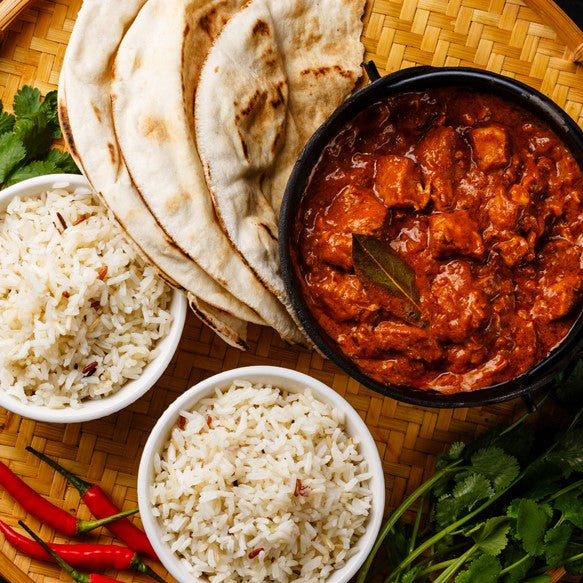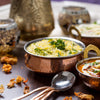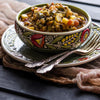Nature kitchen Madras Curry Powder

Spice Up Your Kitchen: Discovering Nature's Kitchen Madras Curry Powder
In the world of spices, few blends capture the vibrant essence of global flavours quite like Madras curry powder. If you're looking to elevate your home cooking with authentic, bold tastes, Nature's Kitchen Madras Curry Powder is a must-have pantry staple. This medium-heat blend combines coriander, cardamom, turmeric, bay leaf, mustard seed, garlic powder, and more, delivering a balanced punch of earthy, aromatic notes with just the right kick. Whether you're a curry enthusiast or a novice cook, this versatile powder opens the door to endless culinary adventures inspired by South Asian traditions. Let's dive into its fascinating origins and explore 10 creative ways to incorporate it into your meals.
The Cultural Origins of Madras Curry Powder
Madras curry powder isn't just a spice mix—it's a product of colonial history and cultural fusion. Named after the bustling port city of Madras (now Chennai) in southern India, it emerged during the British Raj in the 18th and 19th centuries. At the time, Madras was a major hub for British trade and administration, where European colonisers sought to replicate the complex flavours of Indian cuisine for export back home and to sustain expatriates.
Unlike traditional Indian masalas, which are freshly ground and tailored to specific regional recipes, Madras curry powder was a convenient, pre-mixed blend designed for Western palates. It drew inspiration from South Indian spice profiles—think turmeric for its golden hue, coriander for depth, and chilli for heat—but was standardised and bottled for mass appeal. This innovation was largely driven by Indian entrepreneurs, notably the Dalit family of P. Vencatachellum Pillai and his son P.V. Subramania Pillai, who turned it into a global sensation by the early 20th century, exporting it far and wide.
As Indian indentured labourers carried similar spice knowledge to places like the Caribbean, South Africa, and Fiji, Madras curry powder became a bridge between cultures, evoking homesickness while adapting to new cuisines. Today, it's a symbol of Anglo-Indian fusion: not purely "Indian," but a testament to how colonialism blended worlds, creating a spice that's beloved worldwide. Nature's Kitchen honours this legacy with their high-quality, medium-heat version, perfect for modern kitchens seeking that historical zing without overwhelming spice levels.
10 Ways to Use Nature's Kitchen Madras Curry Powder in Curries and Side Dishes
Drawing from South Indian and broader Indian culinary traditions, Madras curry powder shines in dishes that highlight its warming spices. Here are 10 practical ideas to make or season curries and complementary sides—simple enough for weeknights but flavorful enough to impress.
- Classic Chicken Madras Curry: Sauté onions, garlic, and ginger in oil, then add 2 tablespoons of Nature's Kitchen Madras Curry Powder. Stir in chicken pieces, tomatoes, and coconut milk. Simmer for 20-25 minutes. Serve with basmati rice for a hearty South Indian-inspired main.
- Vegetable Madras Side: For a creamy side dish, blend cauliflower, carrots, and peas with yoghurt and 1 tablespoon of the curry powder. Cook until tender and garnish with cilantro. This mild veggie medley pairs perfectly with any curry, echoing Tamil Nadu's love for coconut-infused sides.
- Lamb Madras Twist: Brown lamb chunks and onions, then mix in 3 tablespoons of Madras powder with yoghurt and water. Slow-cook for an hour. The result? A rich, aromatic curry reminiscent of Anglo-Indian feasts, ideal for special dinners.
- Lentil Dal Seasoning: Boost everyday dal by toasting 1 teaspoon of the powder with cumin seeds before adding red lentils, turmeric, and spinach. Simmer until creamy. This protein-packed side draws from simple South Indian home cooking.
- Potato Bhaji (Stir-Fry): Dice potatoes and fry with mustard seeds, onions, and 1½ tablespoons of Madras curry powder until golden and crisp. A staple side in Madras-style meals, it adds crunch to softer curries like chickpea masala.
- Eggplant Curry (Baingan Bharta Inspired): Roast eggplants, mash them, and fold in 2 tablespoons of the powder with tomatoes, onions, and green chillies. This smoky side dish nods to regional variations around Chennai.
- Chickpea Chana Masala: In a pot, sauté chickpeas with garlic, tomatoes, and a generous 2 tablespoons of Madras powder. Add lemon juice for tang. Serve as a standalone curry or side, channelling the street food vibes of South India.
- Coconut Rice Pilaf: Infuse basmati rice by cooking it with coconut milk and 1 tablespoon of the Madras curry powder, plus curry leaves. This fragrant side elevates any curry platter, much like the lemon rice served in Tamil temples.
- Paneer Madras Marinade: Cube paneer and marinate in yoghurt mixed with 2 tablespoons of Madras powder, ginger, and garam masala. Grill or bake. As a tangy side or starter, it captures the grilled delights of Indian coastal cuisine.
- Spinach Saag with a Madras Kick: Wilt spinach with onions, garlic, and 1½ tablespoons of Madras curry powder, then stir in cream or coconut for smoothness. This nutrient-rich side pairs beautifully with naan, reflecting the green veggie staples in everyday South Asian meals.
These uses highlight how Nature's Kitchen Madras Curry Powder can transform basic ingredients into dishes that honour its cultural roots while fitting into contemporary diets. Start with 1-2 teaspoons per serving to adjust the heat, and always toast the powder briefly in oil to unlock its full aroma—a tip from traditional Indian cooking.
Bringing History to Your Table
Nature's Kitchen Madras Curry Powder isn't just about flavour; it's a gateway to understanding the spice trade's role in shaping cultures. From colonial Madras to your kitchen, this blend invites you to experiment and savour the journey. Grab a Pot, fire up the stove, and let the aromas transport you. What's your favourite way to use curry powder? Share in the comments below!
Recipe yields and times are approximate; adjust spices to taste. Always consult dietary needs.





